Last updated on October 28th, 2021
Myseum of Toronto’s Women of the Ward Tour, 2019 (From Myseum of Toronto)
As a sixth-generation Torontonian, I am often regaled with stories of my family’s history. Visiting neighbourhoods across the city helps me imagine what my ancestors might have experienced a century ago. But what if that neighbourhood has been completely eradicated? How do you learn about a city, and understand your connection to the women to helped create it?
The Ward was located in the area bounded by Queen and College, and University and Yonge. From the 1840s to the 1950s, St. John’s Ward, or ‘The Ward’, was the most densely populated immigrant enclave in the city, home to thousands of newcomers that migrated to Toronto — Irish, Jewish, Italian, African American and Chinese, among others. It was the core of Toronto as we know it today – diverse, complex and interconnected.
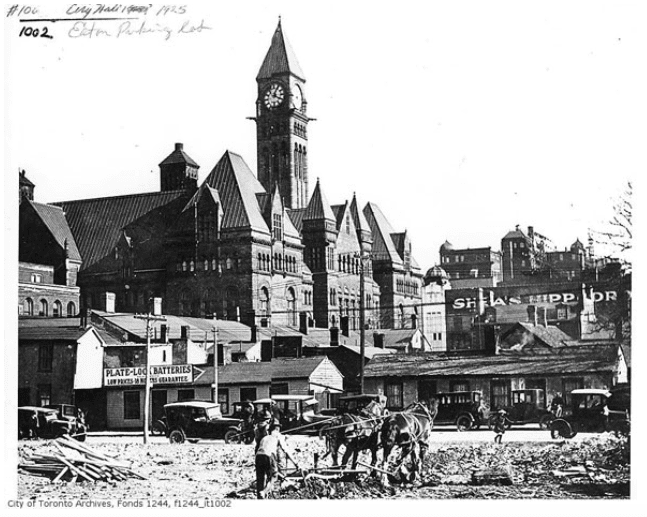
The Original St. John’s Ward, Toronto (From City of Toronto Archives)
Last Spring, I went on a walking tour at Doors Open hosted by Myseum of Toronto, called ‘Women of the Ward’ in Toronto’s original neighbourhood, St. John’s Ward. As I walked the streets of Toronto, I experienced a unique approach to storytelling from actors who portrayed the women from this historic area.
Four women performed monologues in character: Jean Lumb, the first Chinese-Canadian to be awarded the Order of Canada; Cecelia Reynolds, an African-American slave who escaped from her captors on a trip to Niagara Falls and settled in Toronto; Anne Whelan, an Irish immigrant who became a bootlegger to support her family; and Elizabeth Neufeld, a Jewish American social worker who established Toronto’s first settlement agency, Central Neighbourhood House.
That walking tour has now been put online here so that everyone can experience the Ward through the lens of these four resilient women whose stories contribute to the rich history of this former Toronto neighbourhood.
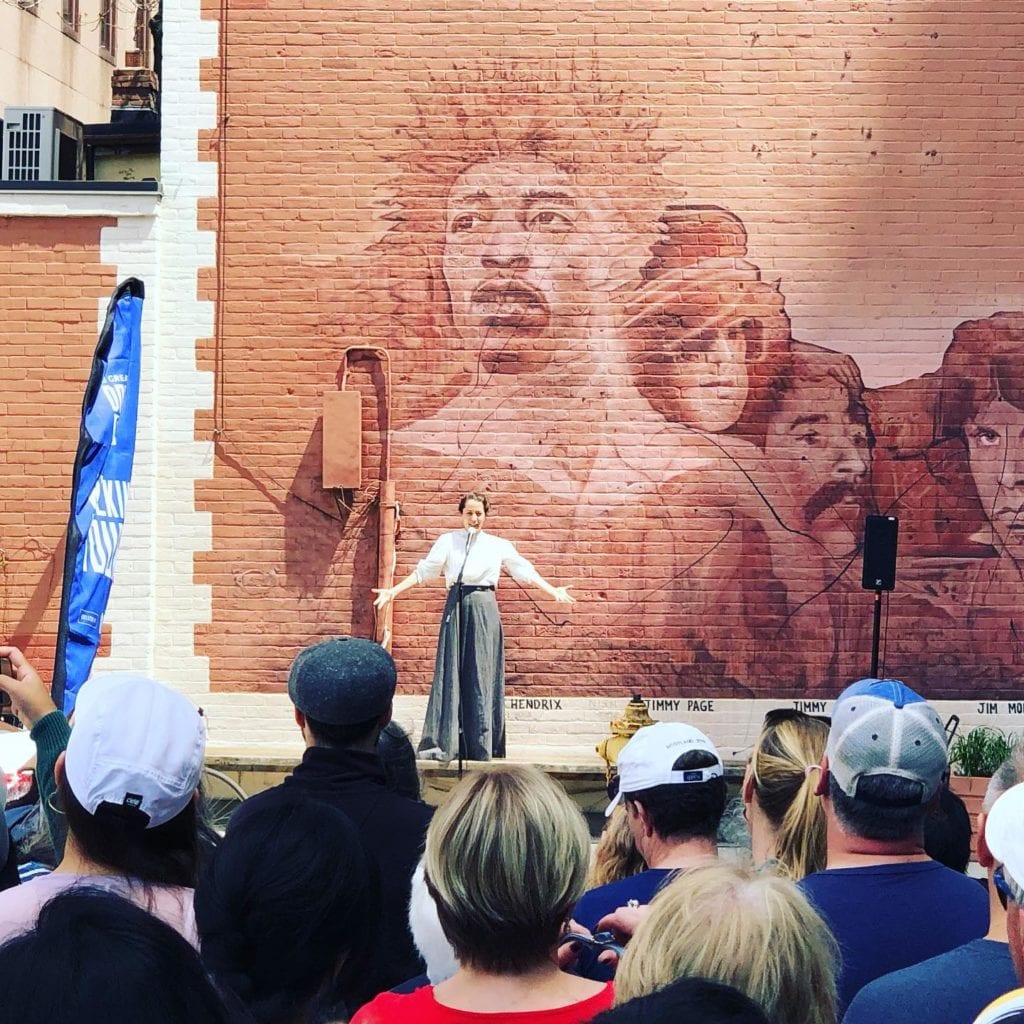
Myseum’s Women of the Ward Walking Tour: Elizabeth Neufeld shares her story at Bay/Gerrard, 2019 (Photo: Carolyn Ray)
Like many neighbourhoods of its kind in the 19th and early 20th century, The Ward didn’t possess the necessary infrastructure to properly serve its residents and was considered by most to be a slum. Without indoor plumbing, toilets, running water or proper sanitation, deadly diseases like diphtheria and typhoid were rampant. Dr. Charles Hastings, the city’s Medical Officer of Health, tasked the city’s official photographer, Arthur Goss, to document the unhealthy living conditions in The Ward. As a result, the area was bulldozed in the 1950s, and in its place, new, modern buildings were erected, including City Hall, the Superior Court of Justice, and The Hospital for Sick Children. In reality, modern Toronto began in The Ward.
Although it no longer exists, The Ward gives us important clues about the origins of Toronto’s remarkable diversity, our resilience and our ability to integrate people and ideas. Long before diversity became a trendy buzzword, The Ward was characterized by its differences, a melting pot of ethnicities and cultures. Its inhabitants were mostly Protestant, but there were thriving African, Italian, Irish, and Jewish communities, and Toronto’s first Chinatown. While the area is often depicted as poor, dirty and disease-ridden with gambling, bootleggers and prostitution, it was also a vibrant, culturally textured area, home to successful entrepreneurs, merchants and professionals.
Jeremy Diamond, CEO, Myseum of Toronto, the non-profit that organizes the ‘Women of the Ward’ tour, hopes that by sharing these untold stories, Torontonians will become even more welcoming to newcomers.
“By encouraging the sharing of stories of the Ward a century later, newcomers and native-born Torontonians alike will have a better understanding of these struggles and how to work together to support the entry into the city of our newest residents,” Diamond says. “The Ward is the root of Toronto’s reputation as being a ‘city of neighbourhoods’. It is important to study, share and tell the stories from a century ago, but it is essential to connect these narratives to the present. This will help create an important understanding of those who still struggle today and how we as a city welcome those in the future.”
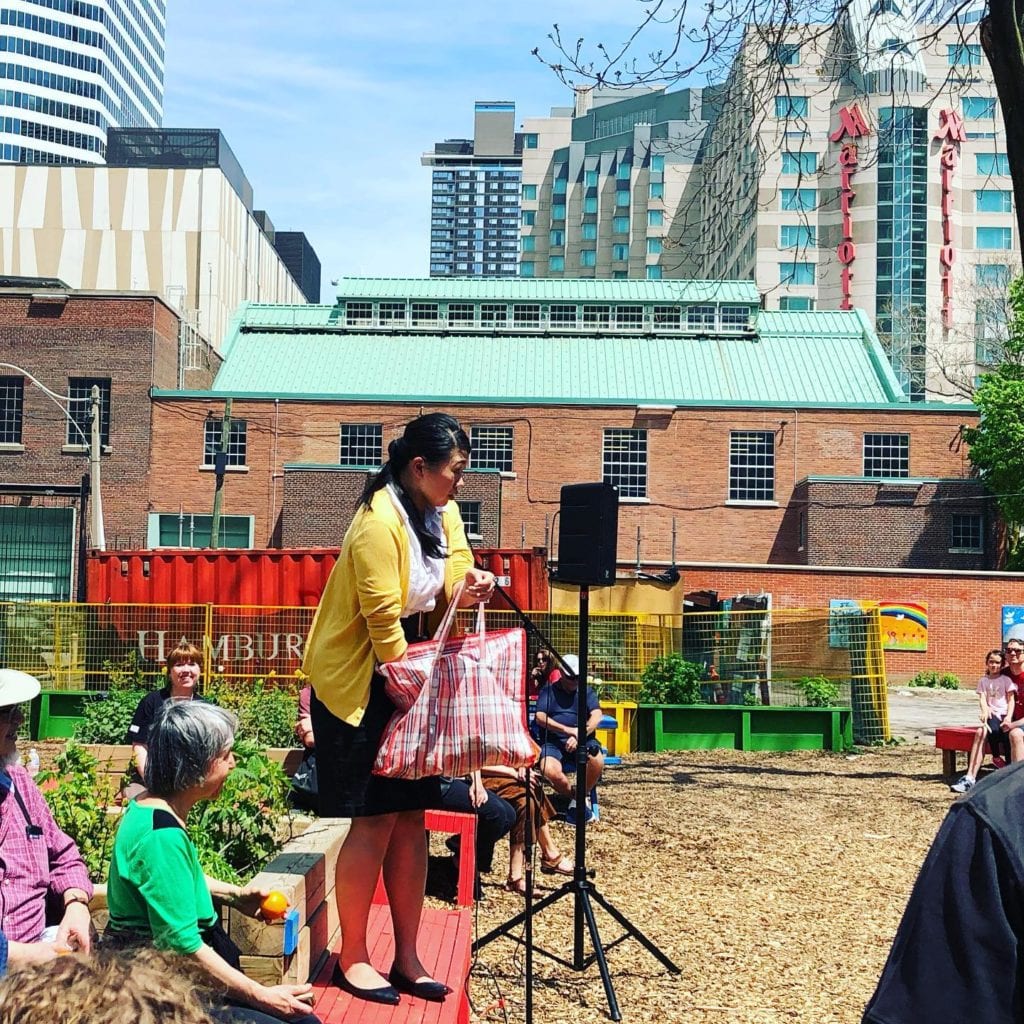
Myseum’s Women of the Ward Walking Tour: Jean Lumb shares her story in Chinatown, 2019 (Photo: Carolyn Ray)
One of the most prominent experts on Toronto’s unique neighbourhood is urban affairs journalist John Lorinc, co-author of the 2015 book ‘The Ward’. Through this compilation of stories from historians, politicians, architects, journalists and descendants of Ward residents, the neighbourhood comes alive. The archival photos of children, families and merchants, are particularly riveting, as they document working and living conditions, long-gone restaurants, hotels, shelters, churches and buildings. Most compelling are the photographs of the children, or ‘slum kids’, minding their younger siblings.
Two of the most beloved stories of The Ward include a silent movie star and Group of Seven painter. ‘America’s sweetheart’ Mary Pickford, who went on to co-found United Artists with Charlie Chaplin, was born in the Ward on Gerrard Street. Group of Seven impressionistic artist Lawren Harris painted many urban scenes of the Ward, including Hurdy Gurdy, a 1913 one that sold for over $1m.
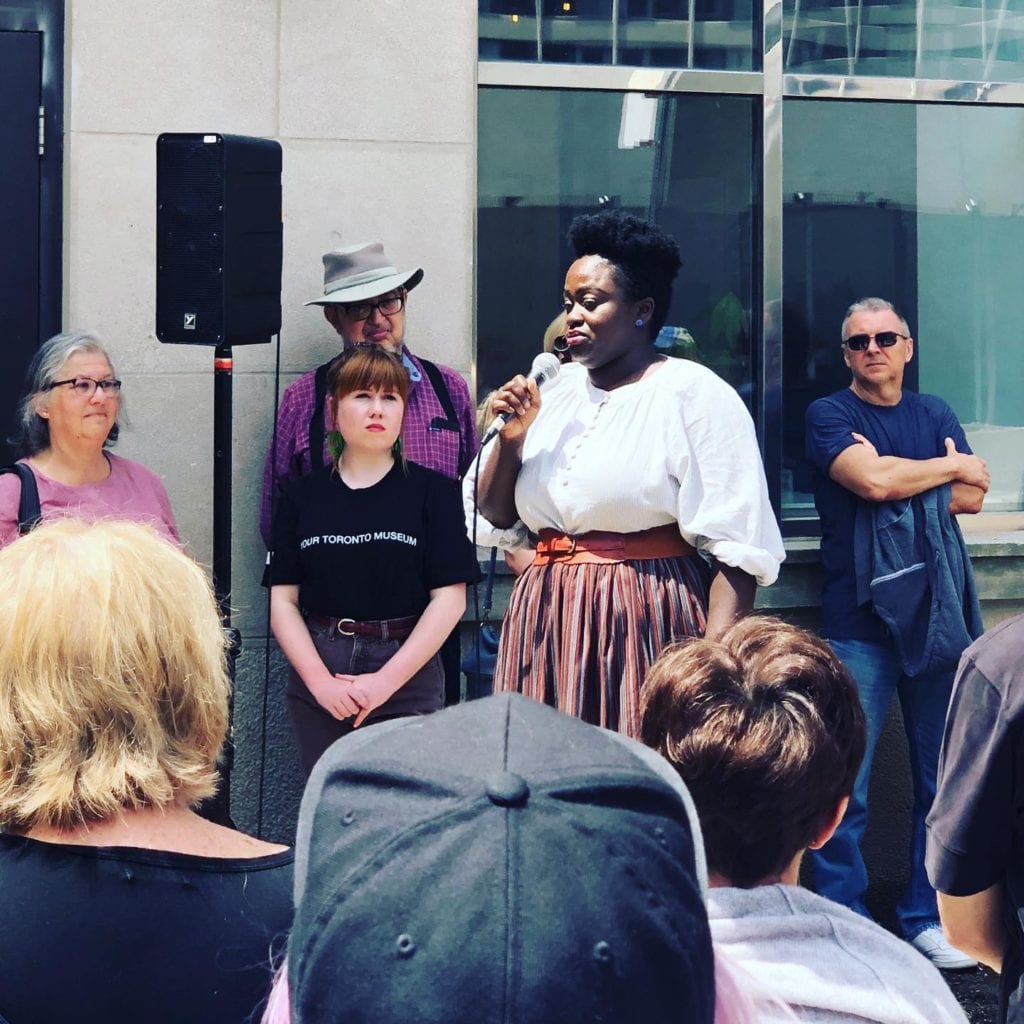
Myseum’s Women of the Ward Walking Tour: Cecelia Reynolds, an African-American slave who escaped from her captors on a trip to Niagara Falls, shares her story in, 2019 (Photo: Carolyn Ray)
“Greater Toronto has a larger proportion of foreign-born residents than any other major metropolitan area in the world; one in two of us were born elsewhere,” says Lorinc. “But the Toronto of a century ago was a small-minded, homogenous place, apart from a handful of immigrant enclaves. Somehow, we got from there to now, and my view is that by understanding the history of The Ward, we can find clues about the head-waters of this city’s remarkable diversity.”
Defined by its diversity, the Ward marked the beginnings of our modern city. However, a neighbourhood is much more than a geographical location where we work, study and live; it’s also a place where our values are shaped and learned. It reminds us that we are a city of immigrants, the legacy of our resilient women, and that our story is not just about who came first, but how we embrace our present and future.
To learn more about The Ward:
- Myseum of Toronto’s ‘Women of the Ward’ Virtual Tour: http://www.myseumoftoronto.com/programming/women-of-the-ward-a-digital-walking-tour/
- John Loricn’s 2015 book ‘The Ward’ is available for download or purchase: https://chbooks.com/Contributors/L/Lorinc-John
- CBC, Walking tour puts theatrical twist on history of one of Toronto’s first immigrant neighbourhoods, https://www.cbc.ca/news/canada/toronto/walking-tour-puts-theatrical-twist-on-history-on-one-of-toronto-s-first-immigrant-neighbourhoods-1.4766387?fbclid=IwAR2q8r1lZ2nw66xO9GCL7IOV00zY0YPZLoGDxuyTWwn7kNwBRAqxFED-vgI
- TIP: For more archival photographs of Toronto, visit the City of Toronto Archies Flickr site at https://www.flickr.com/photos/torontohistory/
Full disclosure: I sit on the Board of Myseum of Toronto, a non-profit organization dedicated to preserving the history of Toronto, and providing relevant commentary on its future.

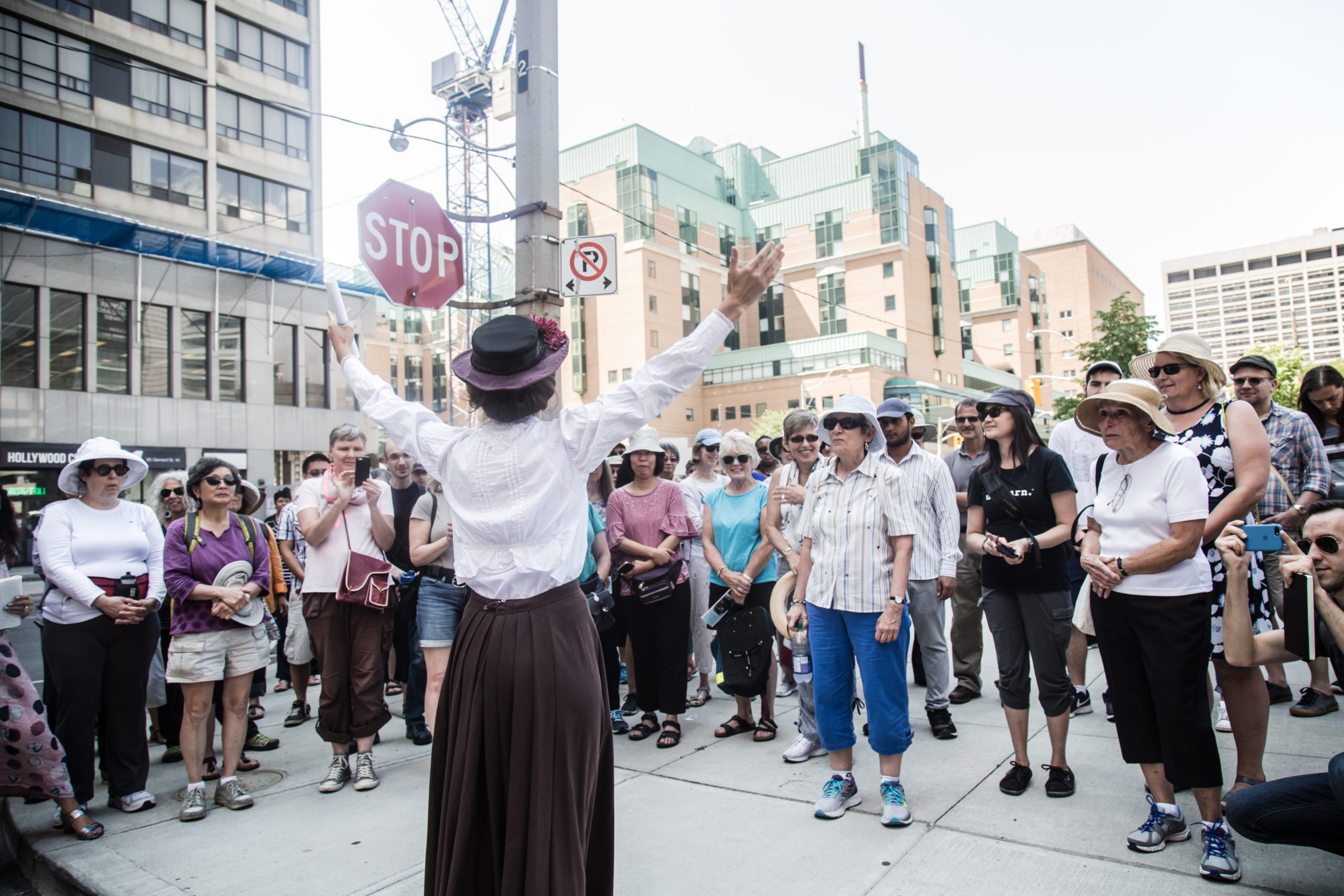

My Grandfather, Percy Clute, was born in St Johns ward, his mother was Lizzie (Eliza Hawkes) who was the daughter of a British soldier who died in 1858, leaving his wife, Mary Ann Hawkes and perhaps 5 children. Eliza Father was Richard and he was a British soldier. Lizzie often lived with her older sister Margaret, who had also. married a soldier. Frederick, Lizzies husband had worked as a bartender(perhaps) here in the neighbourhood. He died of lung disease when Percy was about 4 years old. Lizzie later married a man from Ireland, a widower who lived on Parliament Street His named was William Somerville. He is buried at St Johns Norway with his first wife Bella. Lizzie died in 1916 at TGH, I will find her burial place, Her son Percy was a Grandfather whom I never met, neither did my father. Percy died in 1918 of Spanish flu, leaving a widow and five children, my father was 6 months old He is buried in Mt Pleasant. I have not meant to ramble. For the first time in my life, I am feeling connected.
Maggie, my great grandfather is at St. John’s Norway too. I love your story! Would love to hear more! Carolyn